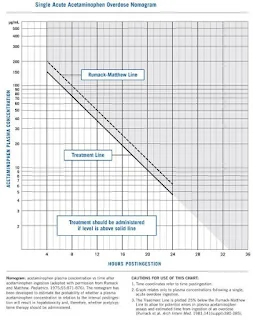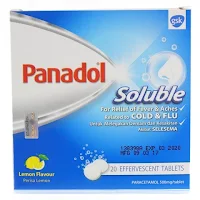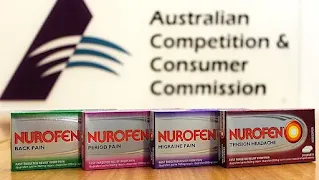Paracetamol
Introduction
During my first year of university, the first key point that I was taught to remember is that the maximum dose of paracetamol (acetaminophen) is 4 gram per day. In fact, the lecturer even highlighted that this will be in the final examination. Only later, I start to realize that the maximum dose might be lower in patients at risk of liver toxicity.
Uses and Dosage
Due to its safety profile, paracetamol is a very commonly used drug in both fever and pain management.
- Often, adult patients (customer) are counselled to take 2 tablets of paracetamol 500 mg up to 3 or 4 times a day (i.e. not more than 8 tablets of 500 mg paracetamol a day).
Nonetheless, looking across the products available in the market, paracetamol presents in a number of
- Brands, such as Uphamol, Panadol, Pamol and Paracil.
- Combination with other medications (such as cough and cold or muscle relaxants), such as Febricol, Decolgen FX, Maxigesic, Norgesic, Suniton and Ultracet.
Paediatric Dosage
Paediatric dosage of paracetamol is 10-15 mg/kg/dose, up to 4 times a day. During dispensing, always check which strength of paracetamol syrup is supplied (120 mg/5 ml or 250 mg/5 ml). The dosing volume is then calculated accordingly.
NOTE: Two recent clinical trials suggested that single doses of oral (15 mg/kg) and rectal (15 mg/kg or 30-35 mg/kg) acetaminophen all have a similar effect on temperature decline in children.
- Comparison of oral versus normal and high-dose rectal acetaminophen in the treatment of febrile children, 2002
- Equal antipyretic effectiveness of oral and rectal acetaminophen: a randomized controlled trial, 2005
Paracetamol Poisoning
Once an overdose occurs (whether intentional or unintentional), there could be a risk of paracetamol poisoning (which can lead to hepatotoxicity). To decide on the management, a blood sample should be ideally drawn for TDM sampling.
- The blood sample should only be drawn at least 4 hours after the acute ingestion.
If the results fall within toxic range in Rumack-Matthew Nomogram, N-acetylcysteine (antidote) will be prescribed.
- The nomogram cannot be used if the patient presents more than 24 hours after ingestion or has a history of multiple paracetamol ingestions. Its reliability also decreases for ingestions of extended-release paracetamol formulations.
- There is fewer adverse effects with a modified two-bag acetylcysteine protocol in paracetamol overdose than the traditional three-bag regimen with initial bolus of 150 mg/kg/h.
NOTE: N-acetylcysteine
- The three main indications of N-acetylcysteine are:
- as the antidote of paracetamol poisoning
- prevention of contrast nephropathy (usual dose: 600-1200 mg daily in 12 hourly for 2 days, beginning the day before the procedure)
- as a mucolytic agent
- Acetylcysteine has been studied in numerous controlled trials and meta-analyses demonstrating conflicting results in the prevention of contrast-induced nephropathy. However, the largest randomized trial, which was published in 2018, did not find improved outcomes with oral acetylcysteine in 4993 high-risk patients undergoing scheduled angiography.
- The study concluded that among patients at high risk for renal complications who were undergoing angiography, there was no benefit of intravenous sodium bicarbonate over intravenous sodium chloride or of oral acetylcysteine over placebo for the prevention of death, need for dialysis, or persistent decline in kidney function at 90 days or for the prevention of contrast-associated acute kidney injury.
Panadol Soluble
In community pharmacy, you will be surprised to see public has a misconception that Panadol Soluble is better indicated for cold and flu than other paracetamol tablet range. This confusion might be due to the bolding of the "cold & flu" on the packaging.
- Panadol Soluble is indicated to relieve fever and aches related to cold and flu, but not to relieve symptoms of runny nose or nasal congestion.
On the other hand, the paracetamol combination that meant for cold and flu is actually Panadol Cold+Flu range (not available over the counter).
NOTE: Panadol ActiFast is absorbed twice as fast as standard Panadol tablets to relieve pain. The excipient sodium bicarbonate produces carbon dioxide in water, speeding up the disintegration and hence, dissolution.
This reminded me of a news that I come across in 2017: Reckitt Benckiser will pay $3.5 million to customers who purchased the painkillers between 2011 and 2015. The specific pain range claimed to target back pain, migraines, tension headaches and period pain, despite containing nearly identical ingredients to regular Nurofen painkillers. They were sold at almost twice the price of Nurofen's general product, and the company made $45 million in revenue from the range in four years.
External Links
- Comparison of oral versus normal and high-dose rectal acetaminophen in the treatment of febrile children, 2002
- Equal antipyretic effectiveness of oral and rectal acetaminophen: a randomized controlled trial, 2005
- Nurofen to pay $3.5 million compensation to customers who bought 'misleading' pain relief, 2017
- Fewer adverse effects with a modified two-bag acetylcysteine protocol in paracetamol overdose, 2018




Comments
Post a Comment